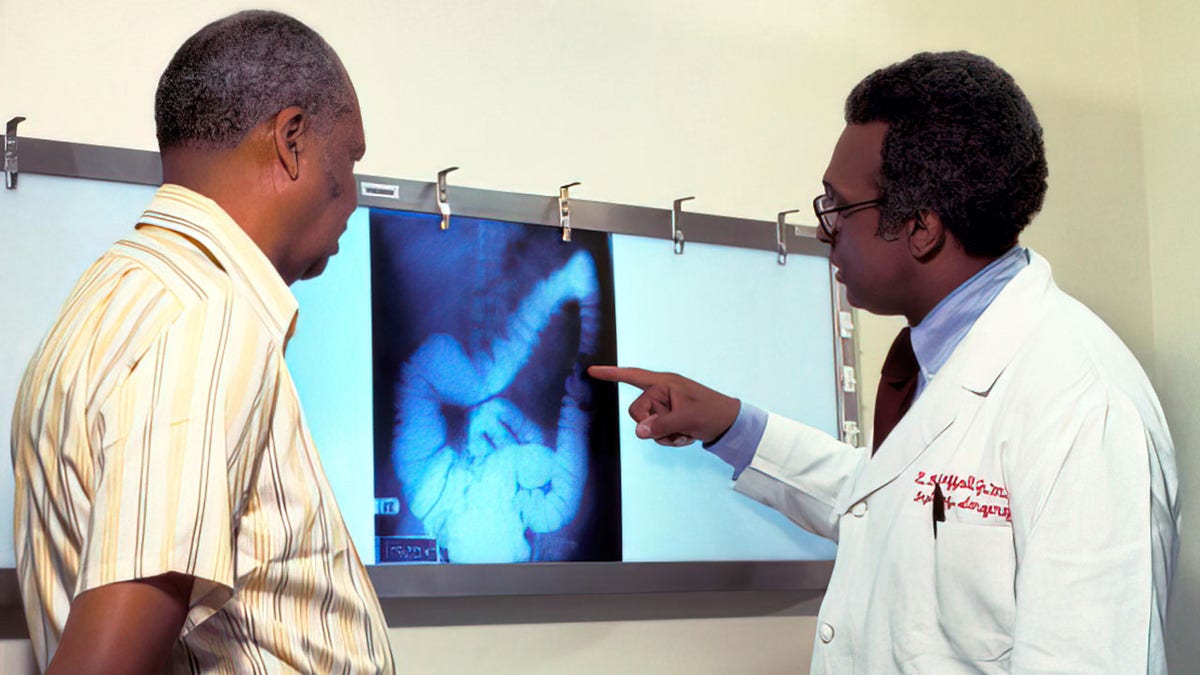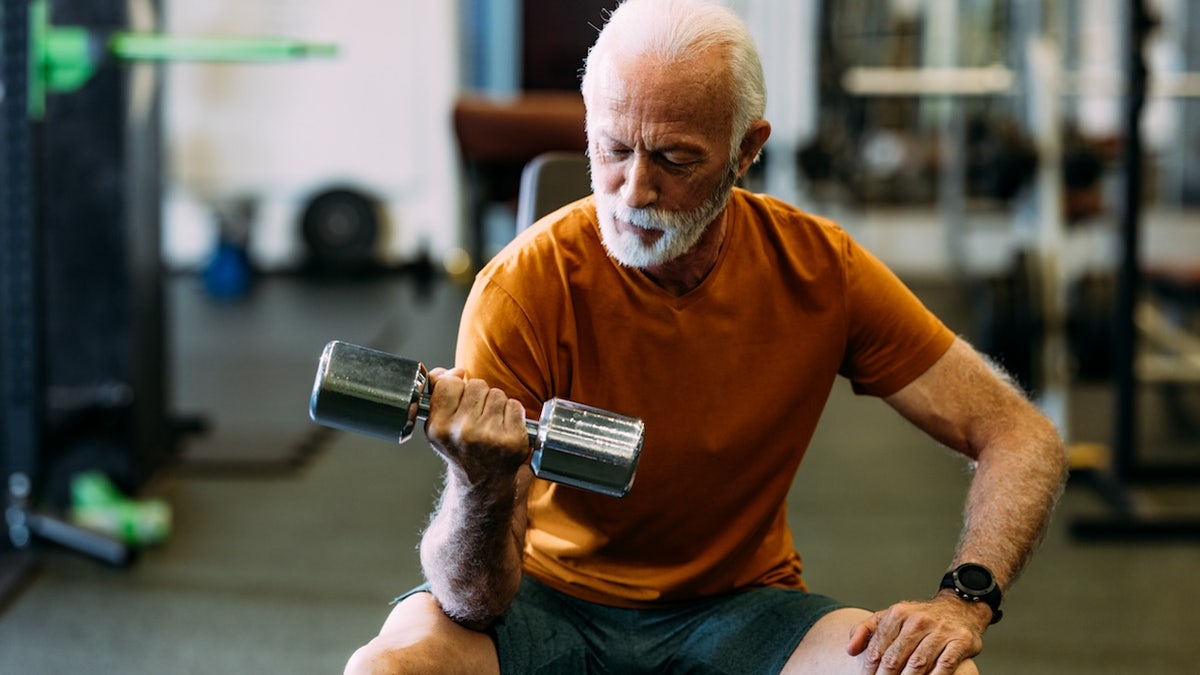Obesity has long been established as a cancer risk factor, particularly when stored in certain body areas.
Now, new research suggests that a higher waist circumference is a risk factor greater than the body mass index (BMI) for cancers related to obesity, but only for men, not for women.
The findings, published in the Journal of the National Cancer Institute, will be presented in May at the European Congress on Obesity in Malaga, Spain.
BMI is an incorrect way to measure obesity, researchers say
The study was directed by Dr. Ming Sun, Dr. Josef Fritz and Dr. Tanja Stocks of the University of Lund in Sweden.
The researchers analyzed data from 340,000 Swedish people averaging 51 years of age whose EMC and waist circumference evaluations were carried out between 1981 and 2019, according to a press release.

New research suggests that a higher waist circumference is a risk factor greater than the body mass index for cancers related to obesity, but only for men, not for women. (Istock)
Then they compared these statistics with the cancer diagnoses extracted from the Swedish Cancer Registry.
For a period of 14 years, there were 18,185 diagnoses of cancers related to obesity among patients in the study.
The ‘hidden’ fat could predict Alzheimer’s disease up to 20 years before the symptoms, the investigation finds
For men, an increase in the circumference of the waist of around 11 cm resulted in a 25% higher risk of cancer related to obesity.
This was a greater risk factor than having an BMI increase, which increased the possibilities by 19%.

For men, an increase in the circumference of the waist of around 11 cm resulted in a 25% higher risk of cancer related to obesity. (Istock)
For women, an increase of approximately 12 cm in the circumference of the waist and an increase in BMI were linked to a risk of 13% higher cancer, according to the study.
Obesity -related cancers include esophagus cancers (adenocarcinoma), gastric dukes (cardia), colon, straight, liver/intrahepatic bile ducts, gallbladder, pancreas, breast (postmenopausic), endometter, ovary, renal cell song, meningioma, tyroid and multiple state multiple.
“BMI is a measure of body size, but does not provide information on fat distribution, while the circumference of the waist is a proxy more related to abdominal adiposity.”
In general, the researchers found that the circumference of the waist is a more precise cancer predictor than the BMI.
“The BMI is a measure of body size, but does not provide information on the distribution of fats, while the waist circumference is a proxy more related to abdominal adiposity,” they wrote.
“This distinction is crucial because visceral fat, which accumulates around the abdominal organs, is more metabolically active and has been involved in adverse health results, including insulin resistance, inflammation and abnormal levels of blood fat. Consequently, similar people can have different cancer risks due to differences in fat distribution.”
Why the difference between men and women?
A potential reason for gender discrepancy, according to researchers, is that men are more likely to store fat viscerally (in the belly), while women generally accumulate more subcutaneous fat (under the skin) and peripheral fat (in arms and legs).
The risk of Alzheimer and Parkinson is higher for people with body fat in two specific areas
“Consequently, the circumference of the waist is a more precise measure of visceral fat in men than in women,” the researchers wrote.
“This can cause the girdle circumference to be a stronger risk factor [for] Cancer in men, and explain why the circumference of the waist adds risk information beyond that transmitted by the BMI in men, but not in women. “

The researchers suggested that combining the circumference of the hip with the circumference of the waist in women could give a more precise estimate of visceral fat. (Istock)
Excess body fat is also related to higher insulin levels in men than in women, researchers said, which could be a factor in the circumference of the waist that is more strongly related to the risk of cancer of men.
“The divergence in how the circumference of the waist and the BMI are related to the risk of cancer between men and women underlines the complexity of the impact of adiposity (excess body fat) in the development of cancer,” the researchers wrote.
Click here to register in our health newsletter
“It suggests that considering biological and physiological differences between sexes could be useful when evaluating the risk of cancer. More research is needed to explore these sex differences.”
They also suggested that combining hip circumference with the circumference of the waist in women could give a more precise estimate of visceral fat.

“The circumference of the waist is a more precise measure of visceral fat in men than in women,” the researchers wrote. (Istock)
Dr. Marc Siegel, a clinical professor of Medicine at the Senior Medical Analyst of Nyu Langone Health and Fox News, did not participate in the study, but reinforced that the BMI is a “good obesity indicator, but it is not the only one.”
“The belly fat contains many of the inflammatory chemicals that act as carcinogens.”
“Obesity leads to inflammation, and inflammation correlates with many types of cancer, including breasts and prostate and gastrointestinal tract cancers,” he told Fox News Digital.
“It is not surprising that the circumference of the waist in men can be a more precise indicator if it is properly measured, because the abdominal fat contains many of the inflammatory chemicals that act as carcinogens,” said the doctor.

Obesity -related cancers include esophagus cancers (adenocarcinoma), gastric ducts (cardia), colon, straight, liver/intrahepatic bile ducts, biliary gallbladder, pancreas, breast (postmenopausal), endometrium, ovary, renal cell portinoma, meningioma, thyroid, thyroid and multiple multiple. (American Cancer Society/Getty Images)
For women, where fat distribution is something different, Siegel agrees that “it makes sense” to consider the circumference of the waist and hip, as the Swedish study suggests.
“The study analyzes more than 300,000 people and is a new important reference, but it is observational, so it shows an association, but not a test,” added the doctor.
Dr. Brett Osborn, a Florida neurosurgeon and longevity expert, also detailed the different ways in which men and women store fat.
Click here to get the Fox News application
“While women accumulate more subcutaneous fat, in hips, thighs and buttocks, men pack it around the waist, At the bottom of the abdomen, “Osborn, who did not participate in the study, told Fox News Digital.
“This is visceral fat, and it is metabolically toxic. It is not just sitting there. It is active, as a gland, secreting inflammatory chemicals (cytokines), raising insulin levels, interrupting hormones and placing the bases for the growth of cancer cells.”

Strength training three times a week is ideal, a doctor advised. “Resistance training reduces visceral fat and inflammation.” (Istock)
Osborn reiterated that BMI is limited in its ability to accurately measure excess fat.
“First, the BMI does not take into account muscle mass, so a short individual and robust with a low body fat percentage can be classified as overweight or obesity, when in fact the opposite is true,” he said.
“Secondly, the IMM does not tell you where the body fat is, and it turns out that this is critical, at least in men.”
Minimize risk
To reduce the risk of cancer, Osborn recommends that men measure their waists to ensure that they are in a healthy range. People can also track their visceral fat score on a medical grade anthropometry scale, he said.
“Understanding that abdominal fat is not just cosmetics, it is carcinogenic.”
“Anything above 40 inches (102 cm) is a red flag,” Digital’s Fox News told Fox.
Strength training three times a week is ideal, the doctor advised. “Resistance training reduces visceral fat and inflammation,” he said.
For more health articles, visit www.foxnews.com/health
Proper nutrition is also important, he said. “Eat as if your life depends on it, because it does. Stop feeding your cancer risk.”
“Understand that abdominal fat is not just cosmetics, it is carcinogenic,” Osborn said. “You may not feel it now, but the clock is running. The visceral fat is silent, aggressive and mortal, and is causing damage even if its BMI is ‘normal’.”


